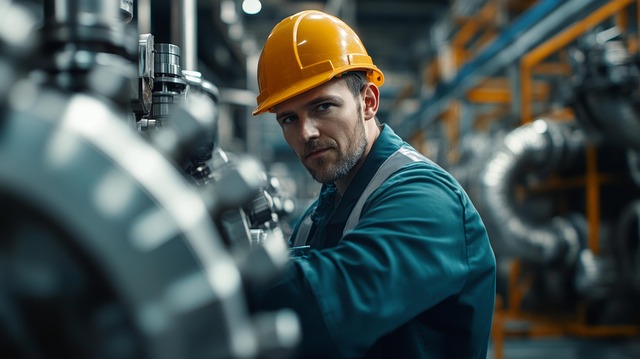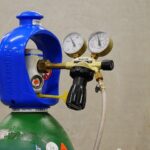In any industry, dust is always a pervasive hazard. Be it a chemical plant or woodworking, or any other, fine particles of metal, wood, and even toxic chemicals or aerosols can pose serious risks to your workers. Also, those dust or fine particles can harm your equipment and harm your overall safety.
To counter these, you will need dust-extraction systems or DES. Under Section 87 of the Factories Act, all those systems need regular inspection. Only when you inspect those regularly you can ensure that those will function properly and won’t harm your workers or equipment. This rule also plays a vital role in industrial safety Engineering in Gujarat.
Hence, in this blog, we will explore why dust-extraction is important. Also, why you must inspect your equipment regularly and what kind of inspections you have to cover. So, let’s check out the details below.
Importance of Dust Extraction
-
It Will Protect Your Workers’ Health
In the workplace, dust can cause lots of respiratory issues. It may be mild irritation or even some serious issues like asthma, chronic obstructive pulmonary disease, and even lung cancer. Choosing an effective dust-extraction procedure can help in the following ways:
- Minimize long term health risks of your workers.
- Reduce airborne particulate matter that your workers may inhale.
- Lower the number of absent employees and increase your workplace’s productivity.
-
It Will Preserve Your Equipment And Workflow
Dust accumulation may clog filters, choke your machinery, and even impede ventilation. All those can easily degrade the performance of your equipment. Only a reliable dust extraction system can:
- Extend maintenance intervals.
- Enhance the uptime of your equipment.
- Prevent downtime and production losses that are usually breakdown-induced.
-
It Will Reduce The Risk Of Fire And Explosion
Dust clouds made of combustible items like metal, wood, grain, or certain chemicals may trigger devastating fires or even dust explosions. So, when you maintain a proper dust-extraction system, you can:
- Control all your ignition sources.
- Capture dust before it get to accumulate.
- Prevent combustible dust from accumulating on various surfaces.
-
Enhancement of the Overall Quality of Workplace Environment
Reducing airborne dust levels in your workplace will enable you to enjoy the following:
- Amazing amount of cleanliness and visibility.
- Improved morale and general well-being of your workers.
- More comfortable and healthier working environments.
-
It Will Help You To Follow Regulatory Compliance and Liability Mitigation
Section 87 of the Factories Act mandates both inspection and certification of your dust-extraction systems. Thus, you can always:
- Avoid legal penalties and prosecution.
- You can reduce your insurance premiums, along with potential liability claims.
- Build your reputation as a safety-conscious employer.
Regular Inspection Requisites under Section 87
Section 87, as enacted in the Factories Act in India, there are a few outline inspection requisites for proper dust extraction systems. These usually include:
-
Frequency of Inspection Initial Commissioning
You need to perform a DES inspection and get certification before first use.
Periodic Inspections: Employers must perform periodic inspections every six months. Also, a few hazardous operations even need quarterly inspections.
After breakdowns or repairs: Anytime you need to modify a system or repair it, you must perform an inspection.
-
Record-Keeping and Documentation
Factories have to maintain a register or log book that must have:
Name and qualification of the inspector.
Dates of inspections.
Certificate dates and numbers.
Findings, deficiencies, and also required corrective actions.
Any incidents of failure or non-compliance.
You need to make this record available for future review by relevant authorities or factory inspectors.
-
Notice of Inspection
Employers need to promptly notify relevant authorities before scheduling an inspection or when serious issues arise.
-
Prompt Remediation
Issues or deficiencies found during an inspection have to be properly addressed without delay. Also, you must not operate the system unless rectified. This will allow you to stay compliant and safe.
What Should Be Included in Inspection
A thorough inspection of dust-extraction systems must include the examination of several components as well as performance indicators. Those may include:
-
Intake Points:
Is your Equipment clean, undamaged, and also unobstructed?
Are they properly positioned relative to dust sources?
Is there sufficient airflow at each hood or point-of-origin?
-
Separators and Filters:
Inspect all your filters, pre-filters, baghouses, cyclones, and also your cartridge collectors.
Gaskets and seals around your filter housings have to be leak-free.
Check if your filters are clean and intact. Also, replace them as per manufacturer guidance.
-
Piping and Ductwork:
All your pipes must be properly supported, sealed, and free of leaks. Also, those have to be corrosion-resistant.
Check for resistance or pressure drop readings. Those may indicate blockages.
-
Fans and Blowers:
Make sure to check whether all the fans and blowers are running smoothly.
Measure the motor current as well as airflow against design specifications.
Carefully look for all types of bearings, belts, shafts to prevent wear or overheating.
-
Safety Interlocks and System Controls:
You need to regularly inspect airflow monitors, pressure gauges, alarms, and also automatic shutdowns.
Test all your safety mechanisms. For example, fire suppression interlocks, fan restart delay, etc.
-
Discharge Points and Exhaust Stacks:
Make sure that proper height, orientation, and placement of stacks are maintained as per environmental norms.
Confirm that all types of silencers are properly functional and undamaged.
Look out for visible emissions, such as escaping dust or fumes.
-
Accessible Design and Housekeeping:
Efficient working of all ducts and hoods must be checked. Also, those are accessible for maintenance and cleaning.
Carefully inspect the surrounding places for risks of dust spill or leakage.
-
Fire-Prevention Features:
Check the correlation with the right fire prevention plan of your place.
Inspect all rotary locks, spark arrestors, suppression systems for enough security.
-
Performance Verification:
Perform your workplace’s airflow velocity measurements, along with static differential pressure. Also, compare them with the baseline.
Note drop in performances, if any.
All these are some important inspection requisites that will ensure that your DES is working in accordance with all types of safety, design, and regulatory mandates regarding industrial safety Engineering in Gujarat.
Who Should Inspect and Contents of the Certificate Issued
-
Who Must Inspect
The inspector entrusted with the task under Section 87 has to be:
A qualified safety expert. He must have credentials in occupational health and safety, ventilation systems, or even mechanical engineering.
Recognized or registered by the Factory Department of the state or a relevant regulatory body.
Someone who is authorized or employed by a competent agency or even a third-party certification body. It has to be independent and can ensure impartiality.
-
The inspector must have enough knowledge regarding:
Factory Act and Section 87.
Extraction technologies and dust hazards.
Applicable industrial standards, as per jurisdiction.
-
Content of the Inspection Certificate
The certificate that you will get after the inspection must include:
The Exact Date of Inspection.
Dust-Extraction System Description: Here, you will see the capacity, model, and installation date of the system.
Inspector Information: Name, certification or license number, qualification, and also signature.
-
Findings Summary
Here you will get the confirmation that your system is working properly. Also, if any deficiencies are seen, those are stated here with remarks and locations.
Validity Period: The validity of the certificate. It must have the date of inspection and the next scheduled inspection.
Recommendations: Any corrective actions required, and also their timelines.
Statement of Compliance: Here, you will see a clear statement like, ‘This dust-extraction system complies with Section 87 of the Factories Act, as inspected on (the date).”
Certificate Number: This is the unique serial number. It will help in proper record-keeping.
Additional Comments: This is the place for optional remarks that will state operator training, maintenance best practices, and more.
So, it is always important to ensure that your workplace remains free of harmful airborne dust. Only if you follow and maintain a proper dust-extraction system, you can protect your workers and workplace from various risks. Thus, under Section 87 of the Factories Act, you need to inspect your systems regularly to ensure a healthy workplace. In this situation, you can always work with Trivedi & Associates to ensure industrial safety Engineering in Gujarat.




